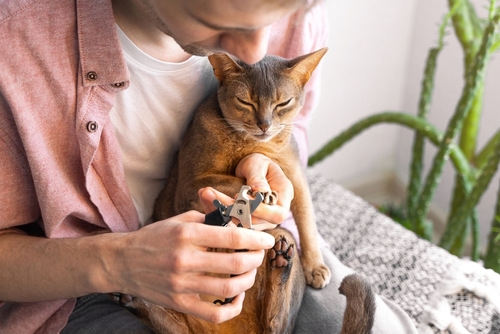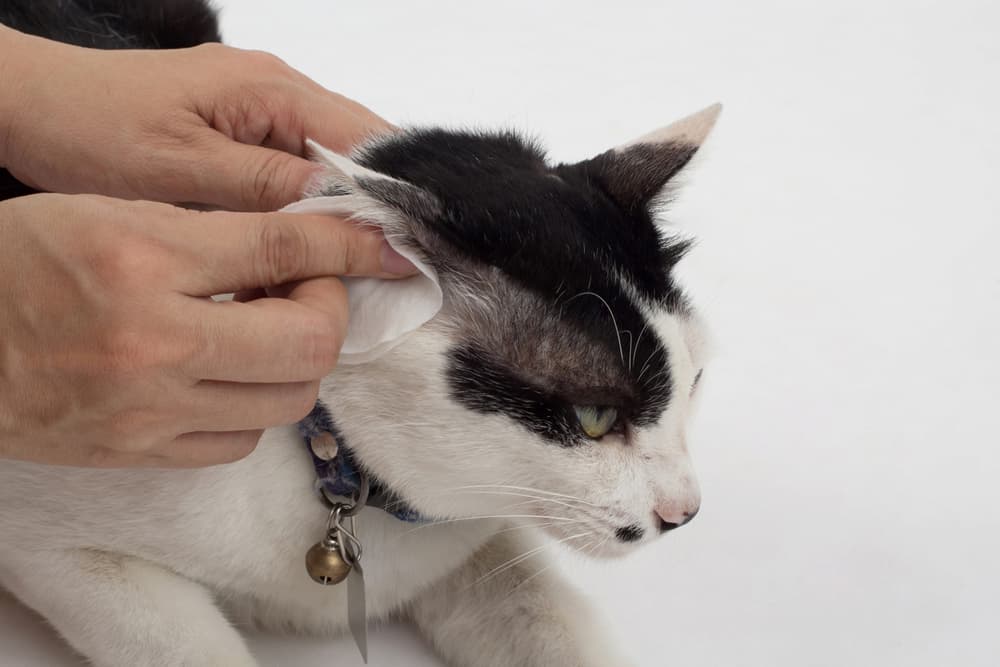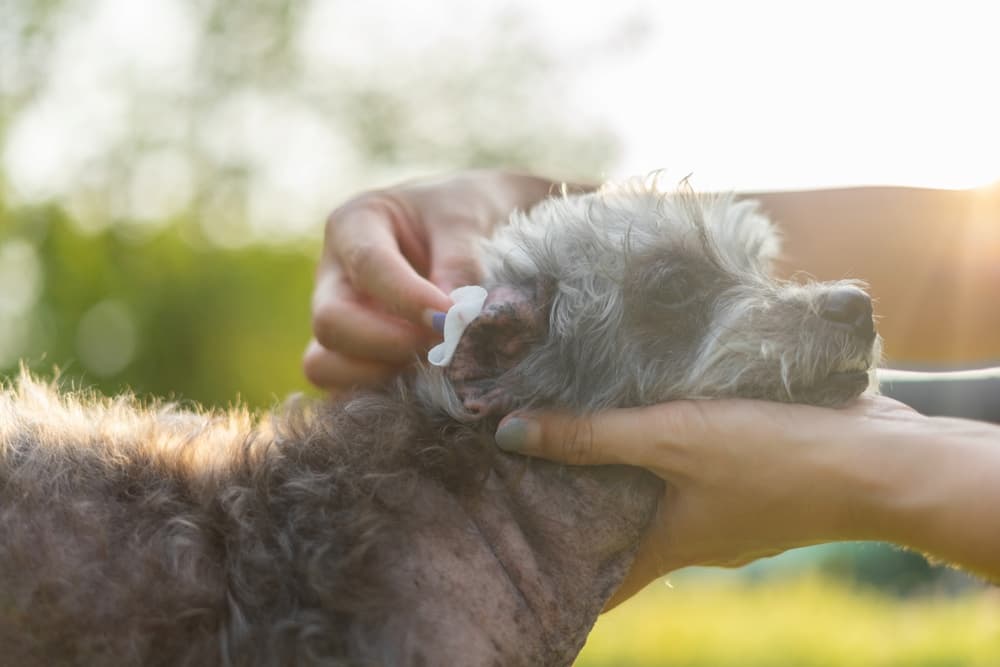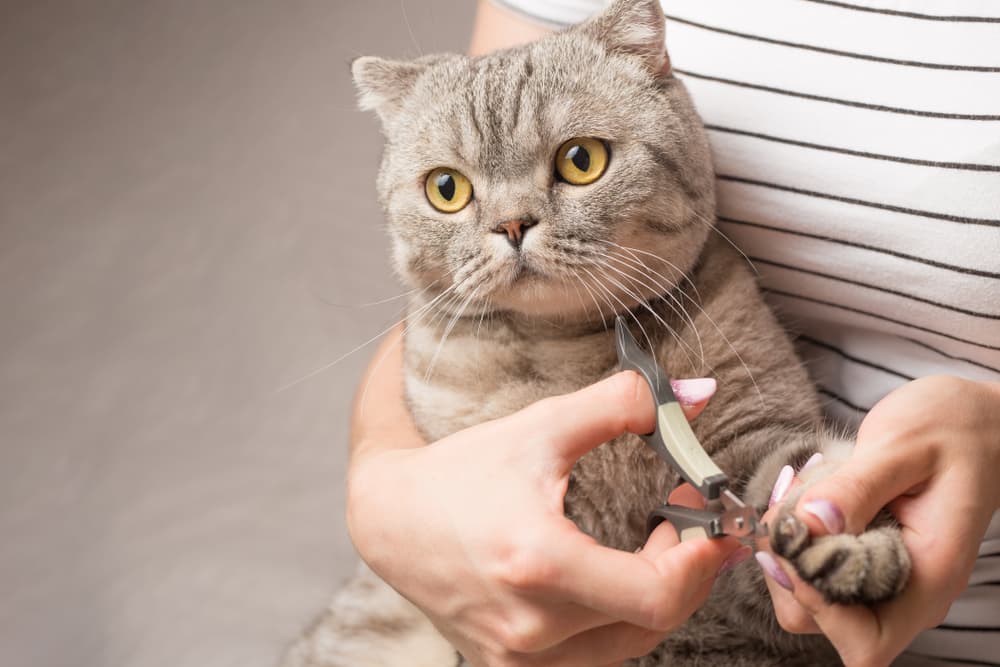Trim Your Cat’s Nails — Without the Stress
Updated on June 06, 2024

Ready to trim your cat’s nails? Regular nail trims are a requirement of cat ownership but are frequently dreaded by cats and humans alike. Too often, nail trims end with a scratched and bloody owner and a frightened cat. In fact, veterinarian and applied animal behaviorist Dr. Sophia Yin, DVM, the author of Low Stress Handling, Restraint and Behavior Modification of Dogs and Cats, estimates that fewer than one in five of her clients feel comfortable doing nail trims on their cats unless they’ve been trained to do so.
But you can’t skip the nail trim. If a cat’s claws are not trimmed on a regular basis, they can curl in on themselves and grow into the foot pad, causing intense pain. Untrimmed nails can also pose a hazard to people and furniture, both of which can be injured by too-long claws.
Don’t give up hope: According to Dr. Yin, it is possible to train both kittens and adult cats to tolerate — and even enjoy — having their nails clipped.
Teach Your Kitten to Relax
All featured products are chosen at the discretion of the Vetstreet editorial team and do not reflect a direct endorsement by the author. However, Vetstreet may make a small affiliate commission if you click through and make a purchase.
“Prepare your kitten for nail trims by teaching her to lie on her back,” Dr. Yin recommends. “While your cat lies on her back, reward her continually with easily consumed treats like canned cat food or small pieces of tuna on the end of a spoon. Deliver the treats right to the cat’s face so she doesn’t have to move to eat the treat. As your cat gets more comfortable lying on her back, phase out the treats.”
Once your cat enjoys lying on her back, Dr. Yin recommends that you get her used to having her paws and claws handled. “Gently squeeze her paws, offering treats at the same time,” Dr. Yin says. “Time the treats right. When the paws are handled, treats should be given continuously at first so the cat is just thinking about food. When paws are not being handled, stop any rewards.” This approach, Dr. Yin says, builds a clear positive association between paws being handled and good things happening.
Progressively increase how vigorously you handle your cat’s paws, but only as long as she stays relaxed. Work toward squeezing more vigorously and then tapping the claws with trimmers without trimming. Dr. Yin also recommends having two people participate in the training, “one rewarding with treats and the other handling the paws and trimmer.”
Trim Your Cat’s Nails: Teach Your Adult Cat to Relax
“If your adult cat is already afraid of nail trims, you will need to create a positive association with the nail trimmers,” Dr. Yin says. She suggests placing the trimmers next to your cat’s food bowl during meals or positioning a saucer or bowl of canned food around the clippers. The cat will begin to learn that good things happen when the trimmers are brought out.
Teaching an adult cat to lie on her back is not easy. Dr. Yin suggests finding an alternative position where your cat is relaxed. “Reward your cat for lying down on the floor or for lying down on her side. You will also need to work on getting the cat comfortable with having her paws and claws handled. Offer treats while you lift and hold your cat’s paw,” she says.
“Clip one nail and offer a treat at the same time. If your cat stays relaxed, then trim the second nail while the cat is eating; if your cat stays relaxed, build up to trimming five nails in one session,” Dr. Yin says. She also recommends doing the trimming with two people if possible, as it’s much simpler for one to treat while the other trims. If you will be doing the trims without assistance, she recommends waiting until your cat can stay relaxed while having her paws handled and then you can treat her after the clipping is done.
“The frequency of nail trims depends on the cat. Check nails every couple of weeks to see if it’s needed. Cats that are outdoors more or use their scratching post regularly may need less frequent trims. Another consideration is the furniture in the home. If you have delicate furniture that is easily scratched when the cat walks over it, you may need to trim more often.”
To find out more about lower-stress ways to handle your cat, visit Dr. Yin’s website.






